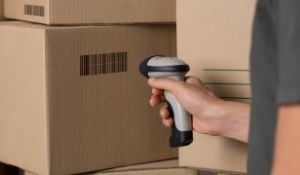
Imagine a world without bar codes: there would be no way to track products or easily do inventory. That chaos you’re imagining is exactly what caused two inventors to design the bar code. For a quick glimpse into the brief history of the bar code, continue reading below.
Beginning of the Bar Code
In 1948, two Drexel University students decided they were going to tackle the problems of the supermarket industry. Bernard Silver and Norman J. Woodland put their brains together and came up with the first bar code. The hope was that their bull’s-eye design, invented with the intention to improve the process of taking inventory and aid customer checkout, would assist the industry overall. The thought was a solid one, but unfortunately, technology at that time could not keep up.
How It Transformed
With time came the linear bar code. David J. Collins designed this system in the 1960s after he saw the need for tracking railcars during his job on the Pennsylvania Railroad during college. The linear bar code not only identified the railcar but also gave ownership details. Even though this design was better and more achievable, it still resulted in poor read accuracy and other issues, such as the high price of the technology needed. Collins did not let this defeat get the best of him—instead, he saw this as an opportunity to grow and develop the product. This directly led to the creation of the Computer Identics Corporation, which used lasers to illuminate bar codes, increasing speed, accuracy, and readability.
Bar codes still weren’t where the supermarket needed them to be, so the 1970s consisted of finding the answer. That was when the original patent for the bar code was bought, leading to the invention of the linear Universal Product Code (UPC) bar code. Eventually, supermarkets everywhere adopted the UPC and bar code scanning technology throughout the 1980s.
Where It Is Today
With the heavy use of technology and the rapid transportation and delivery of products, bar codes and ID tags are everywhere. Bar codes are used to identify almost anything and everything, whether it’s the groceries you’re buying or your ticket to board an airplane. Many advancements had to be made to get the original bar code from where it began to where it is now. Hopefully, this brief history of the bar code has showed you just that.
If you’re a business owner who’s trying to efficiently use bar codes to track and provide all the necessary information for your products, you’ve come to the right place. At Sneed Coding Solutions, we #keepcodingsimple and have the perfect marking and coding equipment to print your products’ bar codes. Give us a call today for more information!


